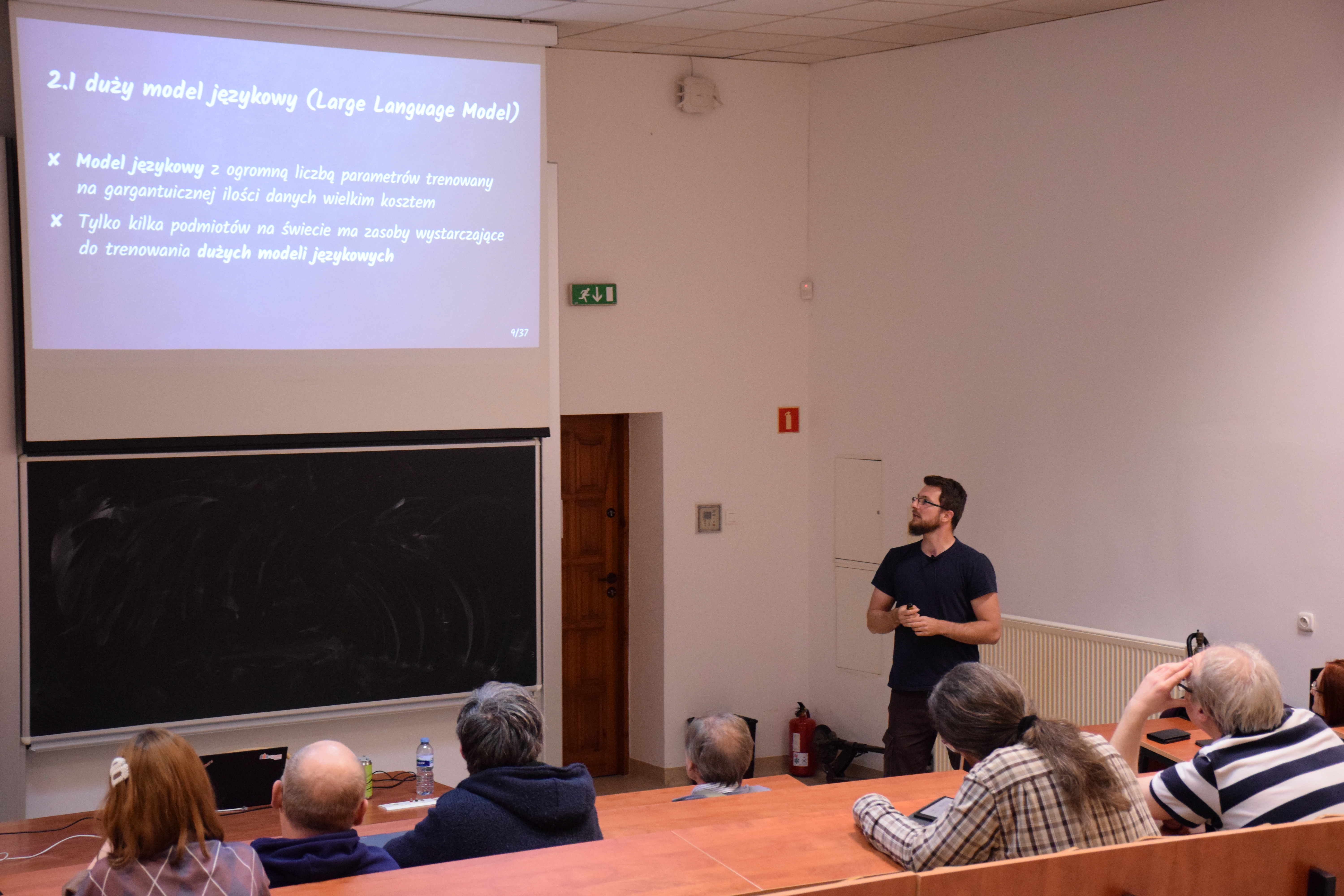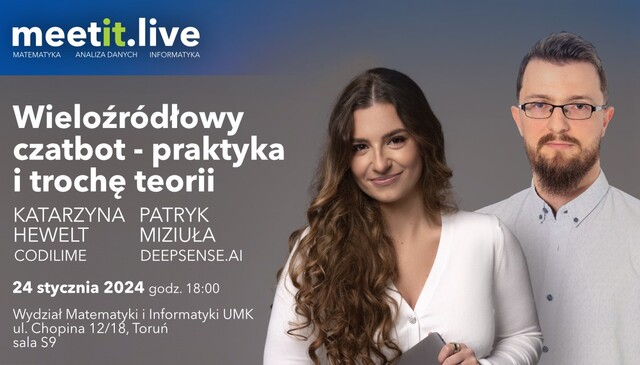Knows everything, will help you in everything, it’s just waiting for you to ask. You come across it more often than you think, it’s there to give you a helping hand. But is it always worth grabbing?
Chatbot. There is only one thing that comes to students’ minds when they hear this word. For many of us, it has been a lifeline for a while now. Let the person who has never asked ChatGPT for a little help in scientific matters cast the first stone.
We actually encounter chatbots in multiple areas of our lives, and we do not tend to ponder on how they function. We just expect them to solve our problems. However, this topic may be worth delving deeper into.
On January 24th, a meetit.live meeting was held at the Faculty of Mathematics and Computer Science. The lecture titled “Multi-source chatbot – practice and a bit of theory” was led by Katarzyna Hewelt and Patryk Miziuła. The hosts focused on explaining the practical aspects of creating multi-source chatbots and the mathematical concepts used for this purpose. It was a great opportunity to gain knowledge about chatbots from people who deal with them professionally. Our questions were answered by one of the presenters, Patryk Miziuła.

How do chatbots function?
First of all, it is worth understanding what exactly the chatbots that we use are and how they work—where do they get their knowledge from that they then pass on to us to use?
Patryk Miziuła is glad that there is a term in the Polish language that is able to make the distinction in chatbots assisting us in a technological way, not like a human would. “It dehumanises chatbots,” he says. “They are used to assist us. If there is a system that is able to assist a big company, we can then be sure we are talking to a chatbot. They are responsible for solving our problems or redirecting us to the right field — this is simply cheaper and more effective. Of course, the famous and beloved ChatGPTs are chatbots, so if we write academic essays using ChatGPT, we use chatbots.”
“Chatbots function as superstructures of a thing called language models. They are huge machine learning models, which are trained using the knowledge available online: Wikipedia, encyclopedias, various magazines, thematic websites, and so on. They are all thrown into such a model, which then studies them. Later, chatbots ask these models about whatever information they need.”
Patryk Miziuła
The problem of chatbots
We expect a lot from chatbots. They are supposed to answer our questions and solve our problems instead of a human being, such as a company employee. However, with each system like this come drawbacks and dangers. There is also the problem of verifying chatbots’ responses.
“Currently, the main problem with chatbots is that they might say the truth, then they might say something that is false, but they are always sure of their answers. So, if I question a chatbot on something that I know nothing about, it may happen that the chatbot will not give me a factual answer, but it will do it in such a confident way that I will simply believe it. This is called hallucination, and it’s a big problem that really undermines the credibility of such solutions.”
Patryk Miziuła
Their credibility is not the only doubt. There is also the question of the chatbot’s responsibility, and how much they can be trusted.
“Another big problem, a completely different one, is the problem of responsibility. Recently, there was a situation in which someone persuaded a chatbot on the website of a certain automotive company to sell them a car for a dollar or so. And, of course, it worked apparently. The problem here arose from the fact that the chatbot was given responsibility for things that should be the responsibility of humans. However, the rigid establishment of how to divide such responsibility is difficult, just like in the case of self-driving cars. If a self-driving car goes crazy, whose fault will it be? These types of questions have been asked, and I haven’t seen any decent answers as of yet.”
Patryk Miziuła
Without a doubt, chatbots have already become a permanent aspect of our lives. They make it easier for companies to function and help reduce employees’ workload. However, they are still a long way from being perfect — this is worth remembering when using chatbots. Even though when we interact with them, we feel as if we were talking to another person, it is only a machine responding.
“There are expectations that two aspects will be improved; firstly, these models need to work better. If they don’t know something, they should admit it rather than pretend. Secondly, we should be able to establish how much responsibility the model should have — to what extent should we rely on the model, and when do we need a human to make a decision?”
Patryk Miziuła
Read the original article in Polish here.

